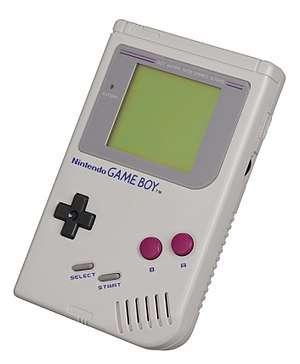Afterburner (modification kit)
The Afterburner lighting kit by Triton Labs is an aftermarket modification to the Game Boy Advance in which a frontlight is installed into the unit.
Upon the release of the Game Boy Advance in June 2001, a vast number of users of the Game Boy Advance complained about the screen's poor visibility; with no internal backlight or frontlight the LCD was only visible in direct light, too much of which would cause glare. Adam Curtis, creator of Triton Labs, put forth the solution in the form of a frontlight kit that allowed the screen to be seen in any environment, even in total darkness.
The Afterburner greatly improves screen visibility at the cost of 25% to 30% battery life reduction, though this can be remedied with the use of a brightness control and extra capacity batteries. The Afterburner kit came with a thumbwheel potentiometer that could be installed to control the light's brightness. Another option was the Stealth Dimmer chip, created by Division 6. This chip let the brightness of the Afterburner be controlled using the Game Boy Advance's existing buttons, so there was no need to carve an extra hole in the case to mount a dimmer.
Due to the construction of the Game Boy Advance case, the Afterburner light is slightly too narrow to illuminate the screen evenly. This creates what is called the "trapezoid effect": a trapezoid-shaped pattern of light across the screen. The Game Boy Advance SP does not suffer from the "trapezoid effect", though its integrated battery makes the power drain more significant.
The following comment from Game Boy Advance SP creator Kenichi Sugino is taken from an interview with GamePro magazine: "In a way, though, it also reminded us of exactly how many users really wanted to see some kind of light in their Game Boy Advances. It was an impetus for us to devote the time to figuring out how to finally just do it. So, in that aspect, it helped us during SP development as well."[1]
References
- Fennec Fox, Interview: The Man Behind the GBA SP, GamePro, archived from the original on 2006-02-18
Further reading
- Triton Lab's Afterburner at IGN
- Afterburner Light Kit at IGN
- Afterburner burns out at Eurogamer
- Afterburner Review at Nintendo World Report
